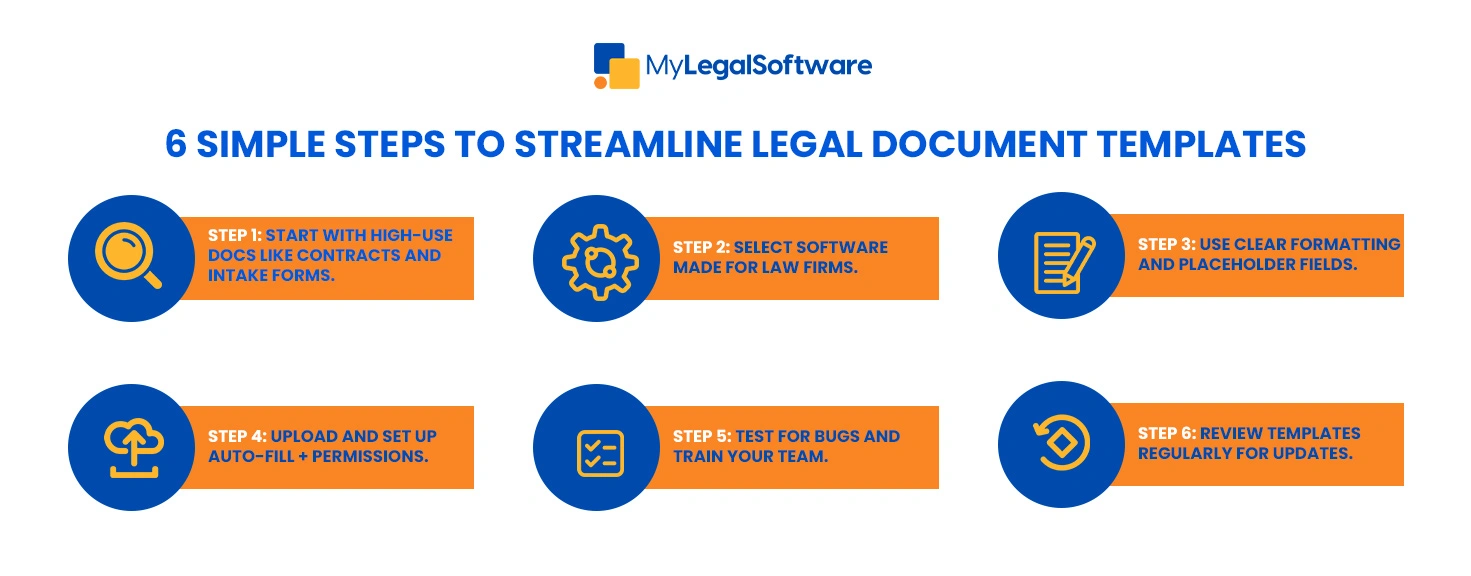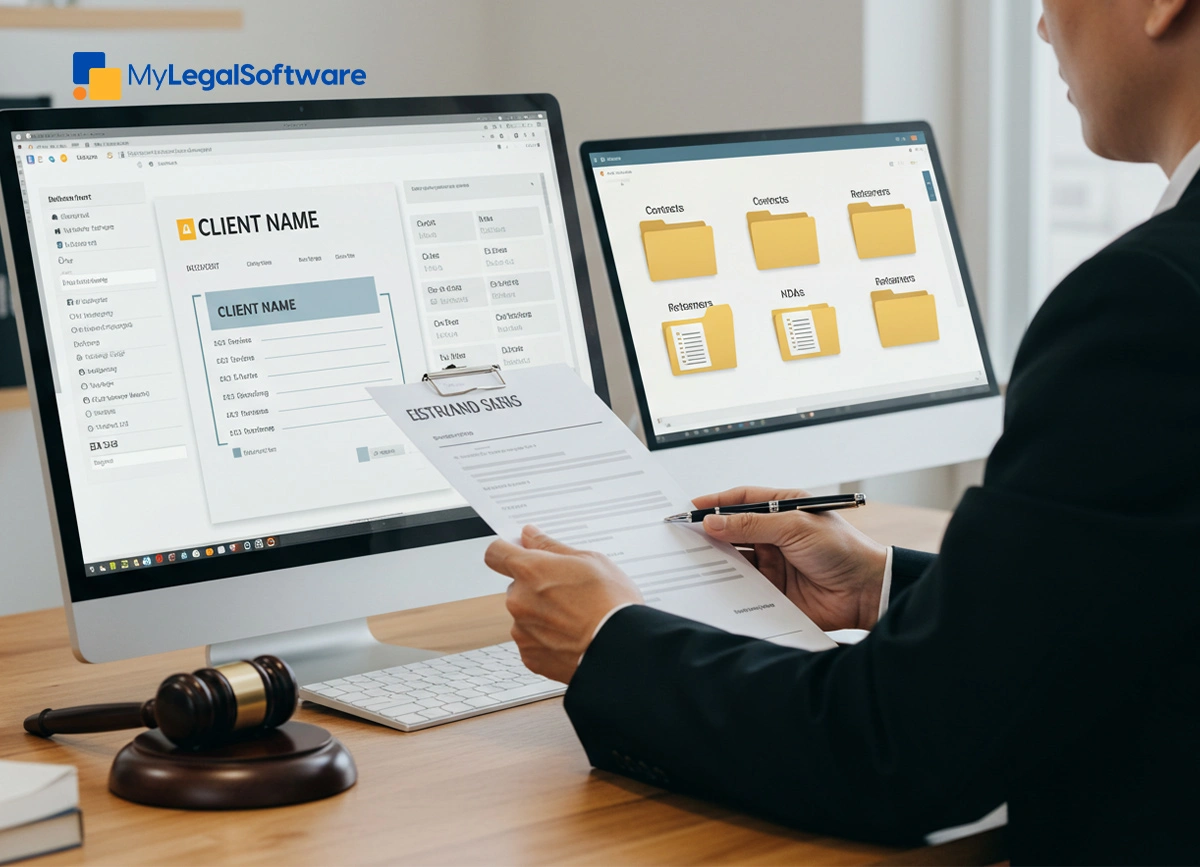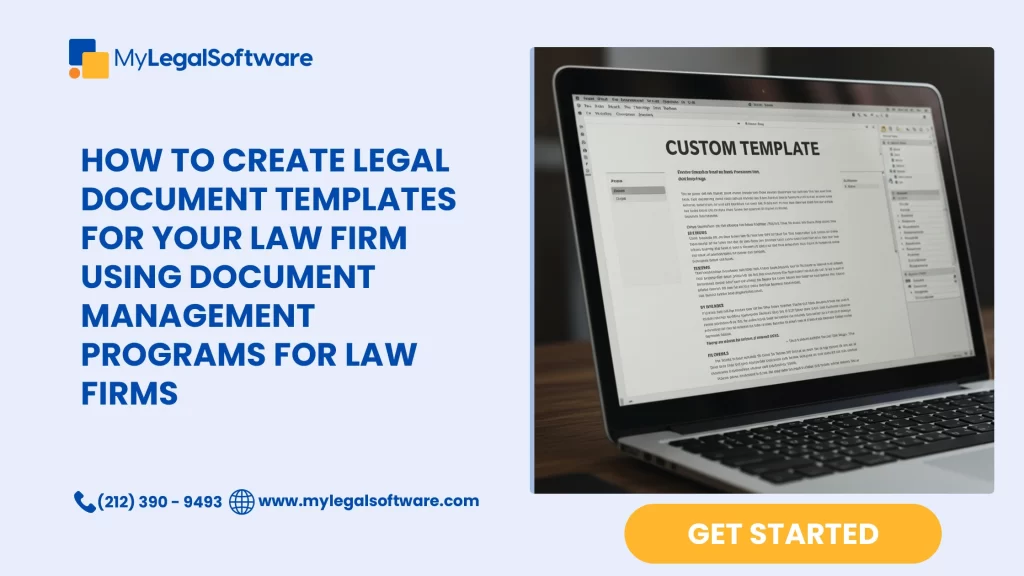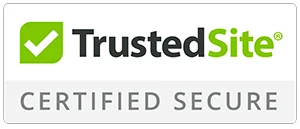Legal document templates are one of the simplest, most effective ways to save time and reduce headaches in your law firm. After all, no one became a lawyer to spend their days retyping the same clauses or updating contract formats for the hundredth time.
You want to focus on serving clients and practicing law—not formatting documents all day.
Legal document templates, combined with smart document management programs for law firms, make a huge difference here. They streamline your workflow, cut down on errors, and let your team work faster and smarter.
In this post, we’ll show you how to create legal document templates that actually work—and how the right tools can transform the way your firm handles document drafting.
Why Document Templates Are Every Law Firm’s Secret Weapon
Legal document templates are exactly what they sound like—pre-formatted documents you can reuse across cases and clients.
They’re a lifesaver for:
- Contracts
- Retainer agreements
- NDAs
- Power of attorney forms
- Legal correspondence
- And more
Instead of reinventing the wheel each time, you simply plug in client-specific details. Boom. Done.
And it’s not just about saving time. Templates ensure consistency, minimize typos, and reduce compliance risks. That’s workflow optimization at its finest.
But here’s the real magic: when you pair templates with smart document management programs for law firms, everything works seamlessly. No more digging through old files or wondering which version is the most up-to-date.
Step 1: Choose the Right Document Management Program
Not all document management tools are created equal. Look for one built specifically for law firms—ideally one that supports template creation and document drafting.
Features to look for:
- Easy template editing
- Version control
- User permissions
- Auto-fill for client data
- Integration with your case management system
Using the right software not only helps organize your files—it helps automate the entire document lifecycle. One click and you’ve got a ready-to-send contract.
If you’re unsure where to start, check out MyLegalSoftware.com. It’s designed with law firms in mind and makes document automation feel easy—even fun.
Step 2: Identify Your Most-Used Documents
Before you start drafting templates, take a quick inventory. Which documents do you use the most?
Ask your team:
- What paperwork do we recreate often?
- Where do we usually make mistakes or forget details?
- Which documents take the most time to draft?
Start with the low-hanging fruit. Think client intake forms, engagement letters, or standard contracts. The goal here is to eliminate repeat work from your day-to-day.
Step 3: Draft Templates That Actually Work
Now the fun part: document drafting.
Grab your best version of the document and clean it up. Remove all case-specific information and replace it with placeholders like:
[CLIENT NAME], [CASE NUMBER], [DATE], etc.
Keep these tips in mind:
- Use clear formatting
- Avoid excessive legal jargon (unless necessary)
- Keep placeholders consistent
- Leave space for signatures or notes
Want to go next-level? Add conditional logic. With the right software, your template can adapt based on case type, jurisdiction, or client details. That’s not just efficient—that’s brilliant.

Step 4: Automate with Your Document Management Program
Once your template is polished, upload it to your document management program.
Here’s what to do:
- Add metadata (so it’s easy to search and categorize)
- Set user permissions (who can edit, view, or use the template)
- Connect it with client records (so names, dates, and details auto-fill)
Many tools offer drag-and-drop interfaces that make this process simple. You’ll spend a little time upfront but save hours every month.
And if your software has e-signature integration? You’ve just cut your document process in half.
Step 5: Test, Tweak, and Train Your Team
Before rolling templates out firm-wide, run a few tests.
Create dummy client profiles and try generating documents. Fix any formatting bugs or placeholder issues. Once it’s working perfectly, train your team.
Pro tip: Create a short training video or cheat sheet. Show your staff exactly how to generate documents using the templates. Once they see how fast it is, they’ll be hooked.
Step 6: Keep Improving Your Templates
Think of templates as living documents. Update them regularly based on:
- New case types
- Legal updates
- Client feedback
- Practice growth
Ask your staff for suggestions. What fields are we always changing? What parts feel clunky? Small tweaks can lead to major efficiency gains.
And don’t forget to delete old or duplicate templates. Clean templates = a happy, efficient team.
What You Gain from Using Templates
Here’s what law firms actually gain from using templates with document management software:
- More billable hours: You’re spending less time on admin and more on clients.
- Fewer errors: Automated templates leave less room for manual mistakes.
- Happier staff: Your team feels less bogged down by repetitive tasks.
- Improved client experience: Faster turnaround = happier clients.
- Scalability: As your firm grows, your document system grows with you.
It’s not just a time-saver. It’s a stress-saver.
Common Pitfalls to Avoid
Before we wrap up, here are a few mistakes to avoid:
- Not naming your templates clearly: “Standard Agreement vFINAL_v3(1)” helps no one.
- Skipping the test phase: Even a small placeholder issue can throw off an entire document.
- Over-complicating logic: Keep your templates smart, but not overwhelming.
- Not updating regularly: The law changes. So should your templates.

Conclusion
Creating legal document templates doesn’t have to be a chore. With the right document management program for law firms, you can turn your most-used documents into time-saving tools.
You’ll streamline your process, reduce repetitive work, and give your team more time to focus on what really matters—helping your clients.
So, ready to stop reinventing the wheel every day?
Visit MyLegalSoftware.com to explore powerful tools built specifically for law firms. From template creation to full workflow optimization, it’s everything you need to get your documents in order—without the headaches.
Want to know the Essential Legal Document Templates Every Law Firm Needs for Efficient Case and Document Management? Go here.
Top 3 Frequently Asked Questions
What types of documents should I create templates for?
Start with high-volume documents—contracts, client intake forms, NDAs, and retainer agreements. Anything you use often is a great candidate.
Can document management programs for law firms handle auto-fill and conditional logic?
Yes! Most modern programs support auto-fill using client data, and many offer conditional logic so templates adapt to each case.
Do templates require regular updates?
Absolutely. Review your templates at least once a quarter to ensure they reflect current laws, firm branding, and client needs.
Do I need to know how to code to create document templates?
Not at all. Most document management programs for law firms offer user-friendly interfaces with drag-and-drop functionality and simple placeholders—no coding required.
How secure are document management programs when storing templates and client data?
Reputable programs use encryption, access controls, and secure cloud storage to protect sensitive documents. Always choose software that is built with legal industry compliance and data privacy in mind.







